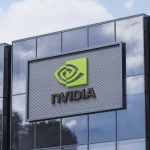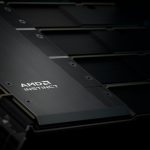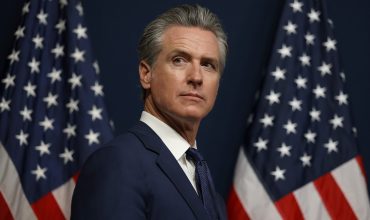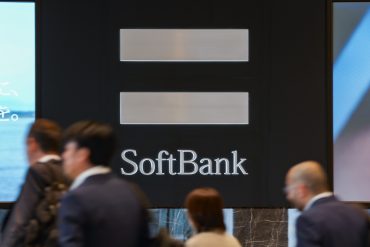
- AI Infrastructure
- Artificial Intelligence
- Semiconductors
SoftBank Triples Nvidia Stake, Backs $1T AI Chip Hub in Arizona
5 minute read

SoftBank’s AI investments reshape semiconductor industry as tech giant backs Nvidia and plans trillion-dollar manufacturing hub
Key Takeaways
- SoftBank triples Nvidia stake to $3 billion by March 2025, up from $1 billion the previous quarter, as CEO Masayoshi Son doubles down on AI infrastructure investments.
- $1 trillion Arizona AI manufacturing hub proposed through “Project Crystal Land,” potentially creating 100,000 jobs in partnership with TSMC and other tech leaders.
- Vision Fund monetizes $2 billion in assets during first half of 2025 to fund new AI bets, including $330 million investment in Taiwan Semiconductor Manufacturing Co.
Introduction
SoftBank Group Corp. dramatically expands its artificial intelligence infrastructure investments, tripling its Nvidia stake to $3 billion while building significant positions in Taiwan Semiconductor Manufacturing Co. The Japanese technology conglomerate’s aggressive moves reflect CEO Masayoshi Son’s strategic pivot toward companies that form the backbone of AI development.
The investment surge positions SoftBank at the center of the global AI supply chain during a period of unprecedented demand for advanced semiconductors. According to Bloomberg, regulatory filings reveal SoftBank’s comprehensive approach to capturing value across the entire AI ecosystem.
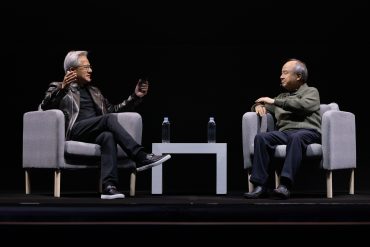
Key Developments
SoftBank increased its Nvidia holdings to approximately $3 billion by March 2025, representing a threefold increase from the previous quarter’s $1 billion position. The company simultaneously acquired around $330 million in TSMC shares and invested $170 million in Oracle Corp.
The Vision Fund monetized nearly $2 billion in public and private assets during the first half of 2025 to fund these new positions. A person familiar with the fund’s activities indicates this reflects ongoing portfolio rebalancing rather than pressure to generate returns.
SoftBank’s strategy extends beyond equity investments to include “Project Crystal Land,” an ambitious proposal for a $1 trillion AI and robotics manufacturing complex in Arizona. The project envisions creating at least 100,000 jobs and establishing a Shenzhen-like tech hub focused on AI-powered industrial robots and advanced semiconductor manufacturing.
Market Impact
The investments target companies central to AI infrastructure development. Nvidia maintains its position as the leading provider of advanced AI chips, while TSMC serves as the world’s premier contract chip manufacturer for major technology companies.
TSMC’s existing plans to invest $165 billion in Arizona facilities align with SoftBank’s vision, though the Taiwanese company’s commitment level to Son’s broader project remains unclear. Samsung Electronics and U.S. government officials participate in ongoing discussions about potential tax incentives for the Arizona initiative.
Strategic Insights
Son’s approach, dubbed the “Son Doctrine,” aims to create a vertically integrated platform controlling critical layers of the artificial superintelligence value chain. The strategy encompasses three pillars: Intelligence investments in companies like OpenAI, Compute initiatives including proprietary chip ventures, and Foundation infrastructure projects.
SoftBank’s participation in Project Stargate, a four-year $500 billion initiative to build U.S. data centers and AI infrastructure, demonstrates the scope of its infrastructure ambitions. The company seeks to position itself across multiple stages of AI development and deployment.
The strategy increases SoftBank’s exposure to the cyclical semiconductor sector, potentially amplifying both opportunities and risks. Geopolitical tensions and supply chain disruptions could significantly impact returns from these concentrated positions.
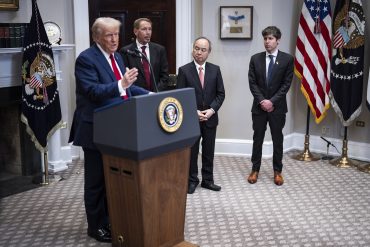
Expert Opinions and Data
SoftBank Chief Financial Officer Yoshimitsu Goto emphasizes maintaining balance sheet flexibility to capitalize on emerging opportunities. The Vision Fund operates with autonomy over asset monetization decisions, according to sources familiar with its operations.
Financial analysts note the strategy’s dependence on continued exponential growth in AI applications and underlying hardware demand. The ambitious Arizona project requires coordination among multiple global partners and relies heavily on government incentives and policy support.
Industry observers express skepticism about the feasibility of the $1 trillion Arizona investment, citing execution challenges and the complexity of securing buy-in from major semiconductor manufacturers and government entities.
Conclusion
SoftBank’s concentrated investments in AI infrastructure companies represent one of the technology sector’s most significant strategic bets. The company positions itself to benefit from multiple layers of AI development while accepting substantial exposure to semiconductor industry cycles.
Success depends on execution across complex industrial partnerships, favorable government policies, and sustained growth in AI hardware demand. The strategy transforms SoftBank into a primary beneficiary of AI adoption while creating significant concentration risk within its investment portfolio.




